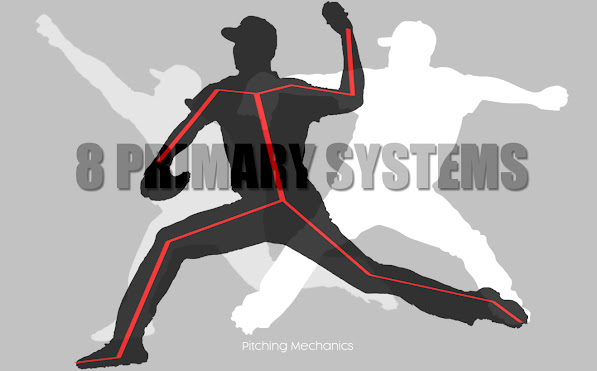Breaking New Ground in Baseball Biomechanics: The Pivotal Role of Throwing Mechanics in Preventing Injuries
At the center of this revelation is a groundbreaking study that, through an extensive research and deep biomechanical analysis, has identified 8 PRIMARY PITCHING SYSTEMS (PPS), each composed of 19 model-specific components. This research, a beacon in the murky waters of sports science, poses a simple and profound axiom: the compatibility of these perfectly aligned components mitigates stress on the joints, thus preventing several nemeses of every thrower.
Certain kinematic and positional parameters at precise moments are holistically crucial. Any misalignment, delay, anticipation, lack or excess of movements outside the specifications of the model (easy to occur among thousands incorrect possible combinations found within the 8 Primary Specific Systems) triggers pressures and tensions on the soft tissues in harmful directions, with the risk of exceeding the resistance of the anatomical material in the joints and accelerating the onset of fatigue. So the essence lies in the choreography of these movements: a harmonious and coherent sequence leads to a powerful and low injury risk performance.
In the dance of the pitch, fatigue emerges as an injury risk factor. As pitchers tire, their mechanics falter, subtly at first, but with cascading consequences. The research echoes this, emphasizing that poor mechanics not only precipitate fatigue but also require enhanced physical preparation to combat the augmented forces at play.
Furthermore, the study highlights the varied nature of the injuries. The classic culprits: fatigue, overuse, excessive force and weakness are well-known errors, but mechanics or biomechanics have been just a suspect difficult to prove guilty.
But fortunately WE’VE FINALLY FOUND A WAY TO ESTABLISH THE CONCEPT OF PROPER MECHANICS. The establishment of these 8 PPS and all their algorithmic specifications brings a new dimension to our understanding.
We are looking at the future of injury prevention and performance optimization with our cutting-edge Injury Predictive Model and comprehensive Injury Prevention Program. By seamlessly integrating biomechanics, biodynamics, strengthening training, recovery protocols, and nutrition science into a unified platform. We offer Front Offices a game-changing solution to safeguard and enhance their team's investment in player health and performance.
Ahead we shouldn’t have reactive approaches to injuries anymore. Our Injury Predictive Model utilizes Biomechanics & Biodynamics analysis, physical assessment, advanced analytics and state-of-the-art technology to anticipate potential risks before they manifest, empowering teams to proactively address vulnerabilities and keep their athletes at the top of their game.
Furthermore, our holistic Injury Prevention Program goes beyond mere mitigation, providing customized protocols tailored to each player's unique phenotype, strength, biomechanical profile and performance goals. From pre-habilitation to ongoing monitoring, we ensure that every aspect of player well-being is meticulously addressed, maximizing longevity and on-field productivity.
With our revolutionary solution, GMs and Directors can rest assured knowing that they are investing in not just the present, but the future of their team's success. Welcome to a new era of performance optimization and injury resilience.
This is just a glimpse of what is about to come with our INJURY PREDICTIVE MODEL AND INJURY PREVENTIVE PROGRAM. Biomechanics, Biodynamics, Strengthening, Recovery, and Nutrition all in one, optimizing every facet.
If you want to know more and/or explore how our solutions can contribute to your success please share your inquiries, thoughts, or comments at performance.optimization@tacticsnr.com. We would love to hear from you!

Comentarios
Publicar un comentario